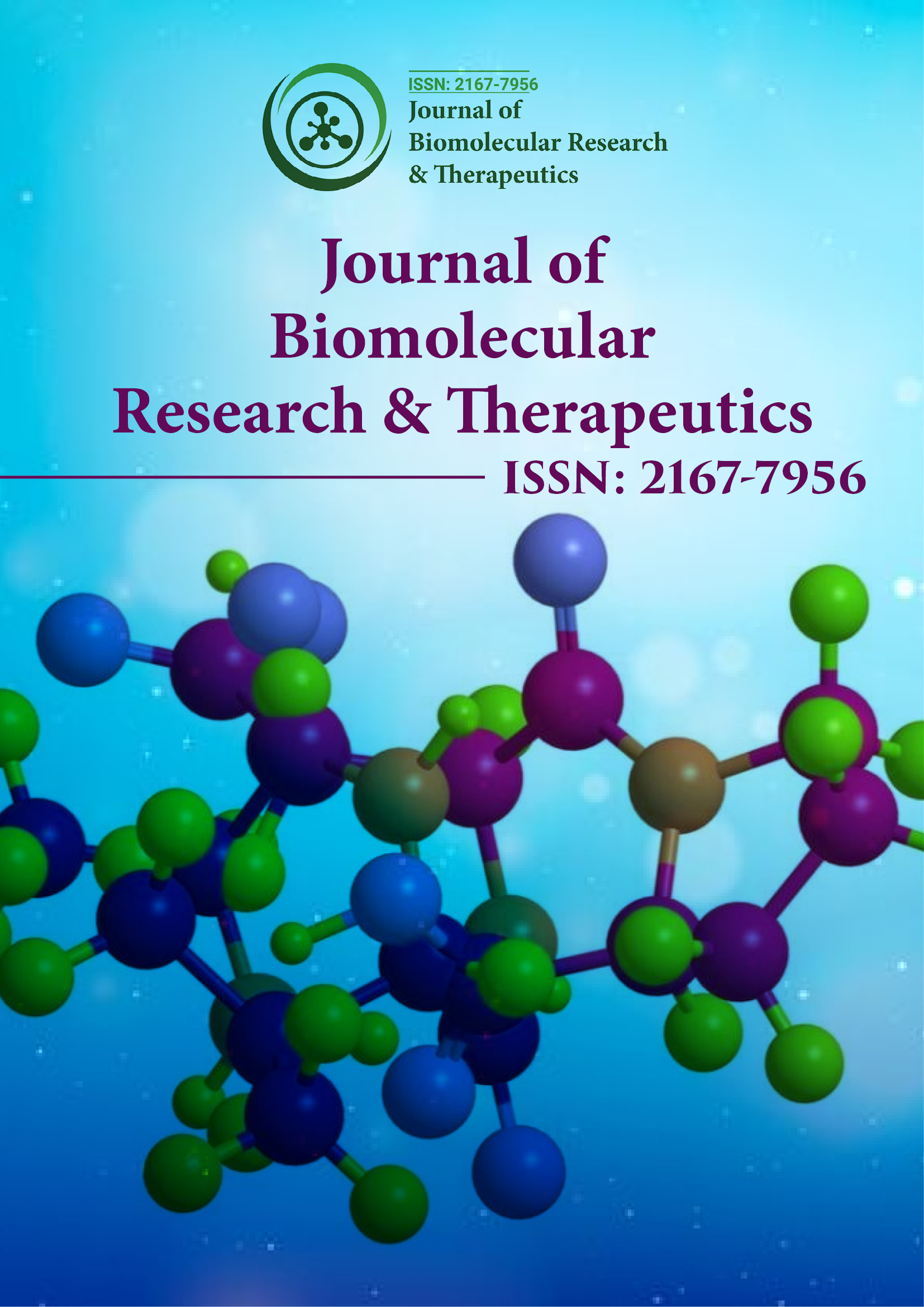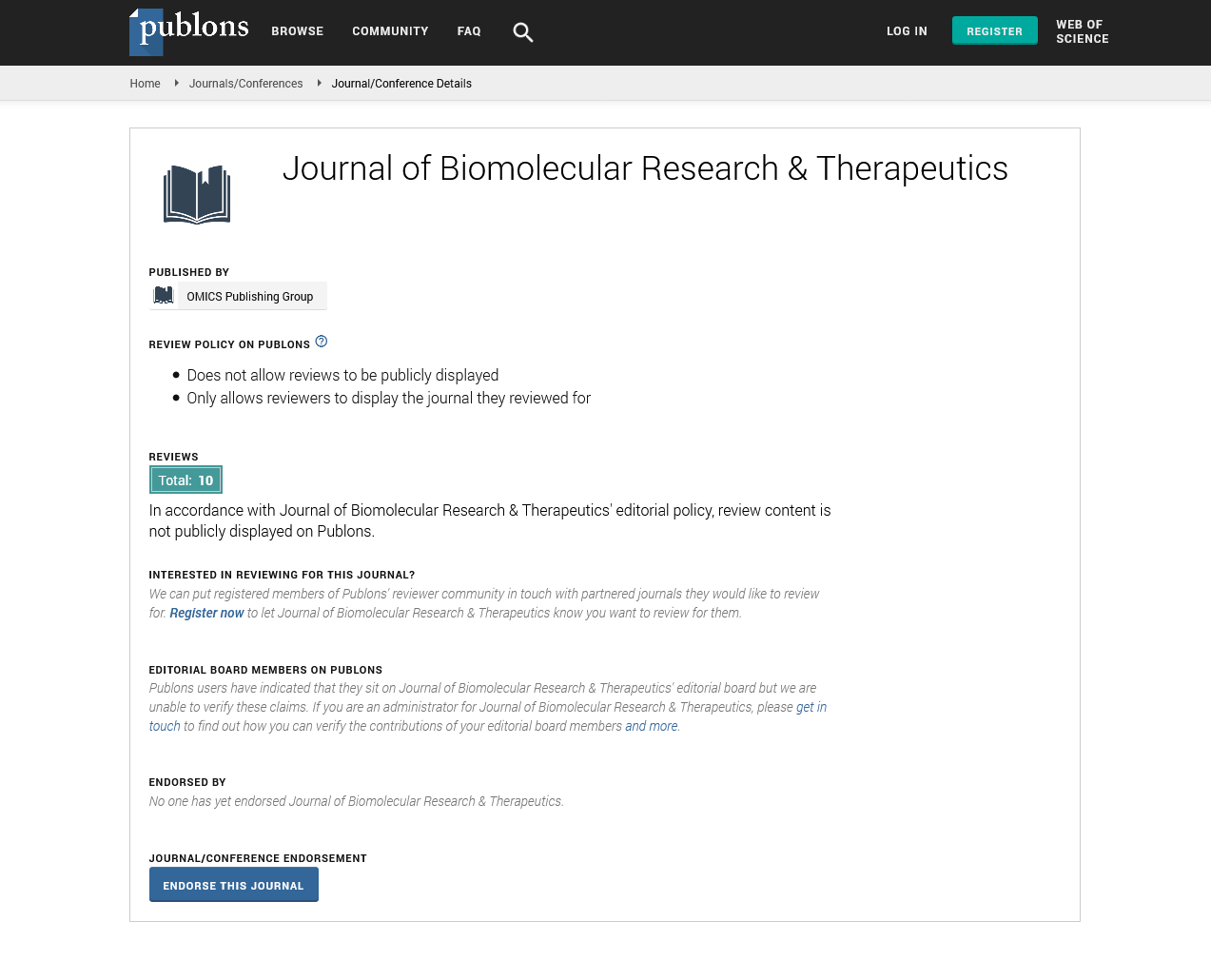PMC/PubMed Indexed Articles
Indexed In
- Open J Gate
- Genamics JournalSeek
- ResearchBible
- Electronic Journals Library
- RefSeek
- Hamdard University
- EBSCO A-Z
- OCLC- WorldCat
- SWB online catalog
- Virtual Library of Biology (vifabio)
- Publons
- Euro Pub
- Google Scholar
Useful Links
Share This Page
Journal Flyer

Open Access Journals
- Agri and Aquaculture
- Biochemistry
- Bioinformatics & Systems Biology
- Business & Management
- Chemistry
- Clinical Sciences
- Engineering
- Food & Nutrition
- General Science
- Genetics & Molecular Biology
- Immunology & Microbiology
- Medical Sciences
- Neuroscience & Psychology
- Nursing & Health Care
- Pharmaceutical Sciences
Brief Report - (2021) Volume 10, Issue 9
Brief Report on Hepatic Encephalopathy
Poorani T Rajendran*Received: 09-Sep-2021 Published: 30-Sep-2021, DOI: 10.35248/2167-7956.21.10.176
Brief Report
Hepatic encephalopathy is a sensory system problem welcomed on by serious liver illness. At the point when the liver doesn't work as expected, poisons develop in the blood. These poisons can venture out to the cerebrum and influence mind work. Individuals with hepatic encephalopathy might appear to be confounded. Medicines can free the assortment of poisons and converse this transitory condition. Hepatic encephalopathy is a regularly brief neurological (sensory system) jumble because of constant, serious liver illness. Unhealthy liver battles to channel poisons (substances made from the breakdown of food, liquor, drugs and even muscle) from the circulation system. These poisons develop in the body and travel to the cerebrum. Harmfulness influences mind capacity and causes intellectual impedance.
Individuals with hepatic encephalopathy might appear to be confounded or experience issues preparing their contemplations. Medicines can eliminate the poisons and opposite the issue. As liver sickness advances, the condition might decline and turn out to be less treatable. Hepatic encephalopathy is otherwise called Porto Foundational Encephalopathy (PSE).
There are three sorts of hepatic encephalopathy:
• Type A is welcomed on by intense liver disappointment (without fundamental constant liver sickness).
• Type B happens in certain individuals who have a shunt that interfaces two veins inside the liver without fundamental liver sickness.
• Type C outcomes from constant liver infection and scarring (cirrhosis).
Hepatic encephalopathy is a mind problem that creates in certain people with liver sickness. Hepatic encephalopathy is a mind boggling jumble that incorporates a range or continuum of sickness that reaches from an unpretentious condition with no outward signs or side effects to an extreme structure that can cause genuine, hazardous entanglements. Manifestations are identified with reformist brokenness of the mind and may incorporate character changes, scholarly impedance, hindered memory and loss of cognizance (unconsciousness).
Hepatic encephalopathy can happen in people with intense or constant liver (hepatic) infection or in people whose liver is circumvent by a portosystemic shunt (with no liver sickness present). A portosystemic shunt is an unusual way that permits blood from the gastrointestinal parcel to sidestep the liver. They can be available upon entering the world (innate) or obtained during life.
Hepatic encephalopathy is caused when poisons that are ordinarily cleared from the body by the liver aggregate in the blood, in the long run venturing out to the cerebrum. Large numbers of the indications of hepatic encephalopathy are reversible when instantly identified and treated.
Hepatic encephalopathy happens in people with liver illness when poisons that are ordinarily cleared in the liver aggregate in the blood at last going to and harming the cerebrum. The specific hidden instruments by which hepatic encephalopathy create in people with liver illness are not completely perceived.
Scientists accept that hypertension of the primary vein of the liver (entryway hypertension) brings about blood bypassing the liver. Regularly, blood goes through the entryway vein and enters the liver where poisons are eliminated or sifted from the blood (detoxification). By bypassing the liver, unfiltered blood winds up circling all through the body in the long run arriving at the mind where certain toxics harm cerebrum tissue.
Citation: Rajendran PT (2021) Brief Report on Hepatic Encephalopathy. J Biol Res Ther. 10:176.
Copyright: © 2021 Rajendran PT. This is an open-access article distributed under the terms of the Creative Commons Attribution License, which permits unrestricted use, distribution, and reproduction in any medium, provided the original author and source are credited.

